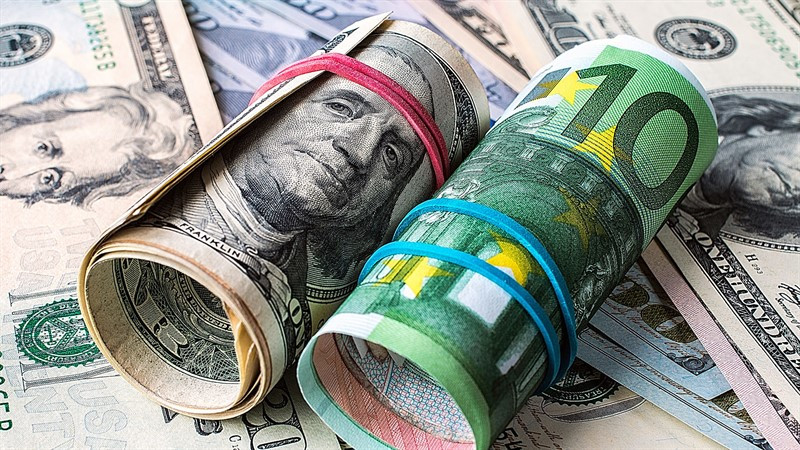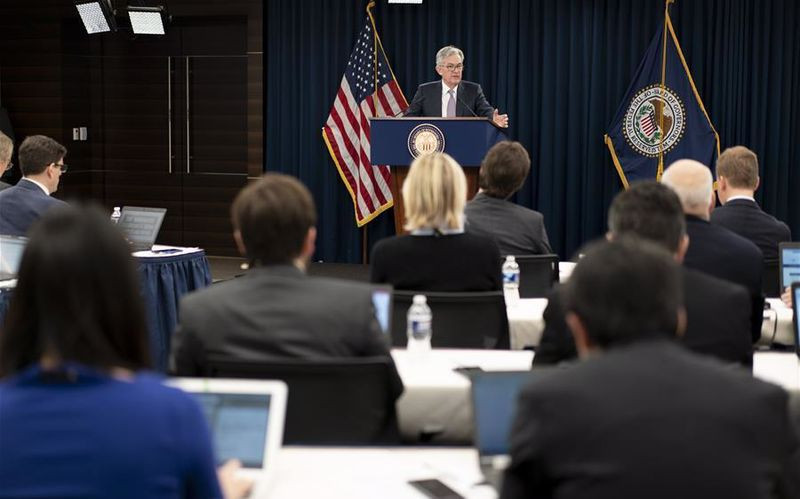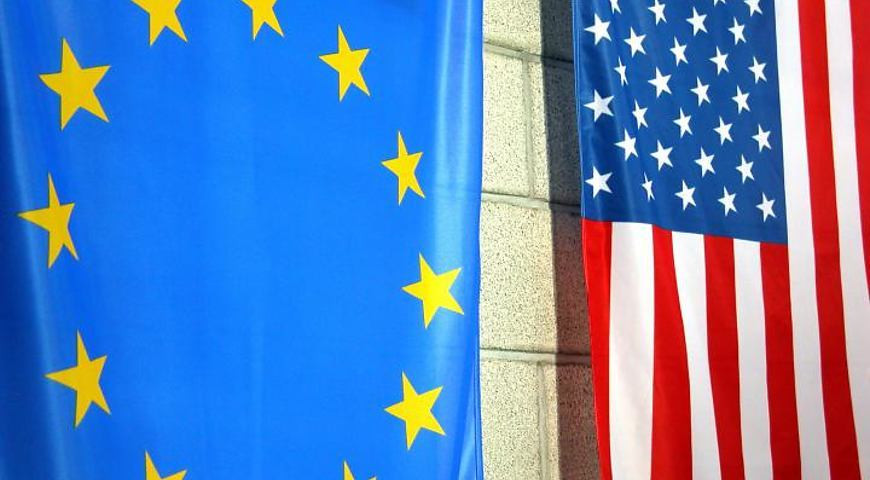
Although the 99.00 barrier did not submit to the dollar bulls last week, the greenback finished in the black, near the 98.85 mark, corresponding to the levels of almost 2 years ago.
Following the results of the last five days, the greenback rose by more than 0.5% against its main competitors, including the euro.
Starting at 1.1045 on Monday, the EUR/USD pair finished at 1.0985 on Friday.
The "fuel" for the strengthening of the dollar was the growth of the yield of treasuries, which continued to move up with the filing of FOMC officials led by Federal Reserve Chairman Jerome Powell.
On Monday, Powell indicated that the US central bank is ready to raise the rate by another half point if it is justified, and this opinion was supported by other officials.
As a result, the strategists of Goldman Sachs raised their forecast for the yield of US Treasury bonds, which implies an increase in rates along the entire curve, expecting an increase in the Fed's key rate by half a percent at the next two meetings of the central bank. Citigroup specialists reported the possibility of four such increases in a row.
By Friday, the hawkish forecast had become a consensus: futures for the federal funds rate put into quotes the probability that by the end of the year the rate should be at least 2% or more if it rises at FOMC meetings not by 0.25%, but by 0.5%.
A growing chorus of Fed officials predicts that the central bank will steadily raise rates in the coming months, and will also begin to reduce its huge investments in securities.
Powell believes that the American economy is quite strong and has good opportunities for a tighter monetary policy. At the same time, he does not expect the onset of a recession this year.
However, fears are growing that the Fed can easily provoke an economic downturn by sharply tightening monetary policy.

Powell has repeatedly pointed to the months preceding the pandemic as the heyday of the national economy. He expects a comprehensive return to the conditions observed in 2019, hoping to win the fight against high inflation without causing an increase in unemployment.
According to a number of experts, this is a pure gamble, since it is unclear which world economy will emerge from the pandemic, the conflict in Eastern Europe and the potential reshuffle in global supply lines, and there are certain doubts that it will continue to function largely as it was before, without any constant changes in the dynamics of prices and wages.
"The prospects outlined by the Fed seem more idealistic than realistic. It's a different economy. Inflation is present. We have a world that has changed dramatically as a result of the pandemic and is now struggling with a humanitarian crisis," ADP analysts said.
The unemployment rate in 2019 remained below 4%, a level that, according to the Fed's basic view of the economy, was supposed to provoke inflation. Nevertheless, inflation remained at or below the central bank's 2% target. At the same time, wage growth, which was slightly more than 3% per year, allowed it to keep up with prices.
But now that the Fed is facing its biggest inflationary surge since the 1980s, wages are rising in a tough labor market, and the conflict between Russia and Ukraine is causing new commodity price shocks.
Despite the growing fears that the central bank will not be able to provide a "soft landing" of the economy, the central bank is currently very concerned about the acceleration of inflation and declares that it is moving towards tightening at full speed.
As you know, the increase in the interest rate and the tightening of the monetary policy of the central bank contributes to the strengthening of the national currency. However, strategists at CIBC Capital Markets believe that this is the end of the history of dollar dominance.
"The big risk now for dollar bulls is that we are close to the peak in terms of putting the Fed policy into prices. This distorts the balance of risks for the US currency downwards in the second half of the year," they said.

"As the central bank moves towards raising rates and reducing its balance sheet to quantitative tightening, investors should closely monitor the slowdown in inflation and growth, which will give meaning to our call for a more moderate increase in the federal funds rate this year, including the March FOMC meeting. The foreign exchange market will be particularly sensitive to any change in tone from the speakers of the Federal Reserve, if this happens," CIBC Capital Markets said.
So far, the greenback is not thinking of slowing down, since even the inveterate doves declare their readiness to support a more significant rate hike at the upcoming FOMC meetings.
"We need to put politics in a neutral mode. Perhaps a 50bp rate increase will help in this, and I am ready to consider this possibility," said Charles Evans, president of the Federal Reserve Bank of Chicago.
The head of the Federal Reserve Bank of San Francisco, Mary Daly, commenting on the Committee meeting scheduled for May, also considered an increase in the interest rate by 50 basis points acceptable.
"We believe that the dollar should receive more support, as the markets will continue to speculate on the topic of multiple Fed rate hikes by 50 bps this year. We expect USD to test the 100.00 mark in the coming days. At the same time, the main victims of its growth are likely to be European currencies," ING economists said.
The EUR/USD pair struggled to attract bulls on Friday, and the dollar was under moderate pressure amid improving market sentiment.
The US promises to increase LNG supplies to the EU, achieved during the visit of the head of the White House Joe Biden to Brussels, somewhat reducing concerns about Europe's energy security.
Some investment was brought to investors by the news that the European Union and the United States have so far withheld radical sanctions measures against Russia, limiting themselves to point solutions.

Faced with strong resistance in the area of 1.1020-1.1040, the EUR/USD pair rolled back. It declined by more than 0.1% on Friday.
Meanwhile, the dollar resumed growth, tracking a jump in US Treasury bond yields.
On Friday, the indicator for 10-year treasuries updated the highs of almost three years ago, rising above 2.4%. This was largely due to the fact that market participants continued to adjust their expectations regarding the pace of the Fed rate hike, putting in prices an increasingly aggressive tightening of the central bank's policy.
The head of the Federal Reserve Bank of New York, John Williams, added fuel to the fire, who said that the US central bank could raise the base interest rate by 0.5% if it was appropriate.
"If it makes sense to raise the rate by 0.5% at the May meeting, I think we should do it, and if it makes sense to raise it by 0.25%, we will do so. I don't see any reason why we couldn't do it one way or another, we just need to make the right decision based on the economic situation," he said.
In addition to the hawkish comments of Fed officials, the EUR/USD pair was pressured by statements from ECB representatives, who once again pointed out that the situation in the eurozone is different from the situation in the United States, and noted that there is no rush to raise the interest rate.
Last week, the economic calendar was poor for events, and important statistical data came out closer to its completion, but they also turned out not to be in favor of the single currency.
On Thursday, Markit Economics reported that the composite purchasing managers' index in the eurozone in March fell to 54.5 points from 55.5 points recorded in February. At the same time, the same indicator in the US rose to 58.5 points, reaching an eight-month high, against 55.9 points in the previous month.
The flow of negative statistics for the euro continued on Friday. According to recent IFO estimates, business sentiment in Germany collapsed in March to its lowest level since January 2021.

The business climate index in the country, which was 98.5 points in February, fell to 90.8 points this month. The indicator of economic expectations also decreased to 85.1 from 98.4 points. The index of the current economic situation sank to 97 points from the February figure of 98.6 points.
All this led to the fact that at the end of the last five days, the EUR/ USD pair lost about 0.5%.
The main currency pair started the new week under bearish pressure. The dollar continued to develop an upward trend, breaking above the key level of 99.00.
The USD index managed to retest the area of 99.30 on Monday, and now another visit to the peak of 2022 from March 7 at 99.41 looks almost inevitable. After absorbing this level, the index may rush to the psychologically important barrier of 100.00, and then aim for the high of May 2020 at the level of 100.55.
The dominance of the dollar remains in the foreign exchange market, which is becoming more expensive against the euro, while being in demand as a safe haven asset and as a currency that benefits from divergence in the rates of the US and European Central Banks.
On Monday, ECB President Christine Lagarde once again downplayed the risks of stagflation in the euro area.
"The incoming data do not indicate a significant risk of stagflation. Economic growth in the euro area in 2022 may amount to only 2.3% under the severe scenario of the development of the Russian-Ukrainian conflict. In all scenarios, inflation is expected to decrease by 2024 and settle at a level close to the central bank's target level of 2%," she said.
Judging by the fact that the EUR/USD pair has dropped to almost a 2-week low near 1.0950 today, market participants do not share the ECB president's optimism, as do economists who say that tensions in Ukraine represent a stagflationary shock for Europe. They warn that this increases the risks of a new recession due to restrictions on European exports, problems in supply chains and rising costs of energy, raw materials for households and the large industrial sector of the region.
Although inflation in the eurozone is rapidly accelerating and has already exceeded the ECB's target level of 2% by almost three times, the central bank is in no hurry to take measures to contain it, fearing to harm the European economy.

Fresh data on inflation in the currency bloc will be published on Friday, and analysts expect the consumer price index to reach a new record high of 6.5%.
"The European Central Bank is in a difficult position due to obstacles to economic growth and very high inflation," Commonwealth Bank of Australia strategists said.
"The balance of risks suggests that the EUR/USD pair may test 1.0800 in the coming weeks," they added.
As for the dollar, according to experts, the potential driving force for the USD this week is Friday's US employment data for March.
According to forecasts, 475,000 jobs will be added in the US economy after 678,000 were created in February.
This report will help the market understand whether the Fed's roadmap for raising the key rate is too cruel or not.
However, the reaction of investors to this release may be limited, given the continuing uncertainty around Ukraine.
The next round of talks between Kiev and Moscow is due to take place in the coming days, this time in a face-to-face format, on the territory of Turkey.
Statements by Ukrainian President Volodymyr Zelensky that his country is ready to discuss neutrality and non-nuclear status if security guarantees are provided give hope to the EUR/USD bulls. At the same time, the Ukrainian side intends to insist on sovereignty and territorial integrity in the next round of negotiations with Russia, which casts doubt on the chances of success.
The Relative strength Index (RSI) is approaching the 30 mark, signaling that the main currency pair may consolidate losses in the near term before continuing to decline.
EUR/USD is trading in the immediate vicinity of 1.0940 (the Fibonacci retracement level is 23.6%). If the pair closes below this mark, the bears' next target will be the psychologically important level of 1.0900, and then - 1.0850.
On the other hand, the initial resistance is located at 1.1000 (100-day moving average) and then at 1.1020 (50-day moving average) and 1.1040 (50% Fibonacci retracement level).





















